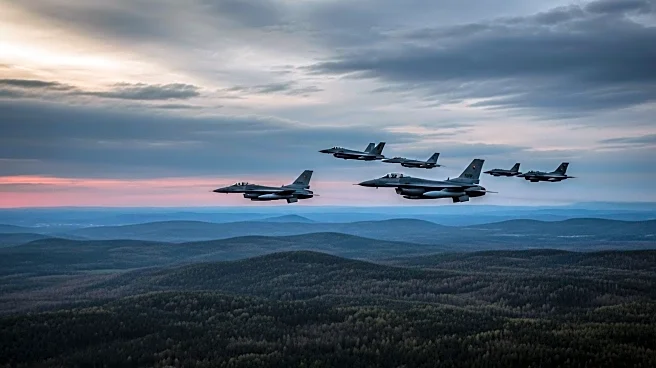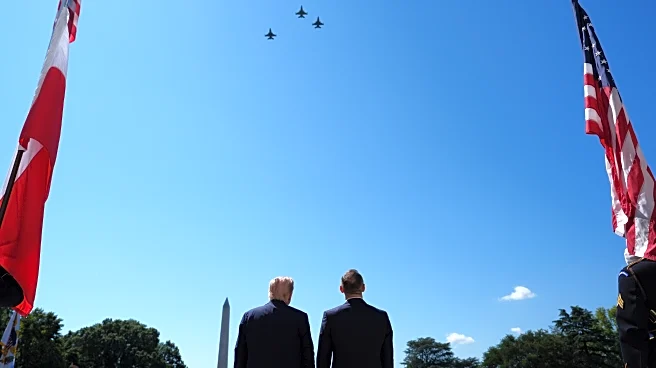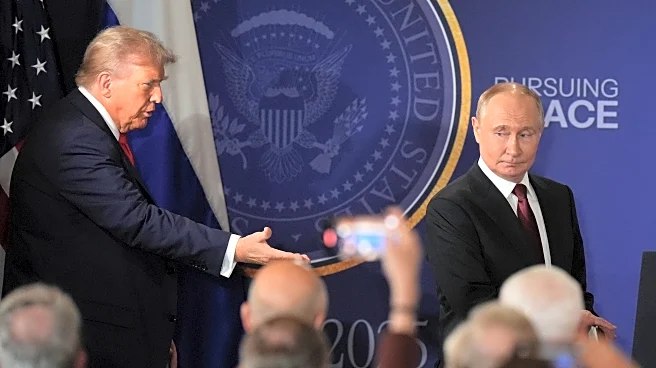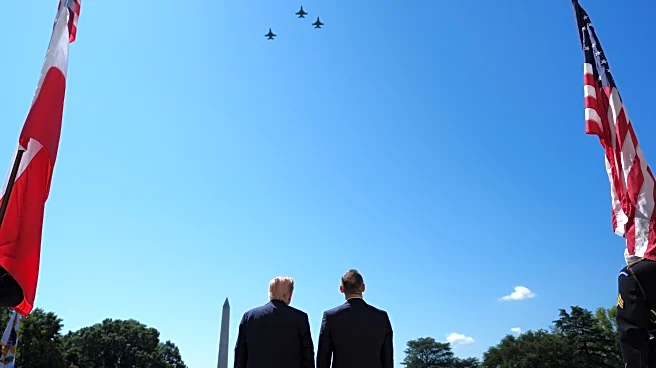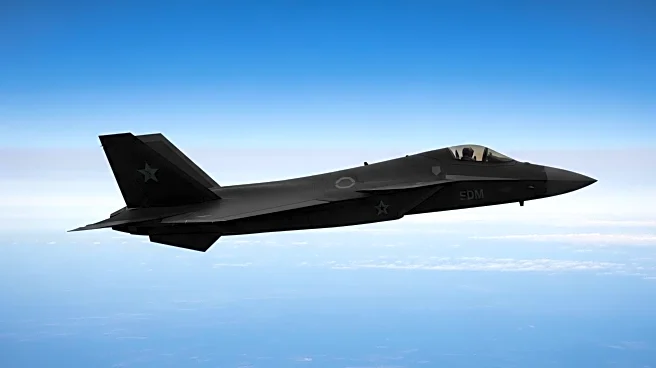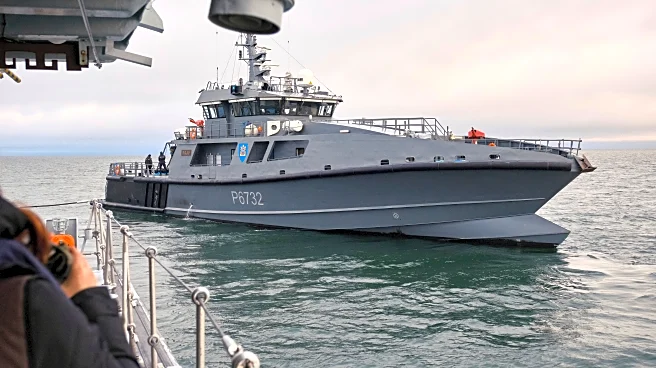What's Happening?
Russia and Belarus have initiated the 'Zapad 2025' joint military exercise, focusing on military buildups along NATO's eastern borders and simulating attacks on Poland and the Baltic States. The exercise, scheduled for September 12-16, involves up to 30,000 troops, with significant participation from Belarus and Russia's Kaliningrad exclave. The drill includes nuclear weapons and Russian-made hypersonic missiles, raising security concerns among neighboring countries. In response, Estonia, Latvia, Lithuania, and Poland plan to conduct their own military exercises with around 40,000 troops to counter potential low-intensity attacks on their infrastructure.
Why It's Important?
The 'Zapad 2025' exercise underscores the deepening military cooperation between Russia and Belarus, particularly in the context of the ongoing conflict in Ukraine. The drill's focus on NATO's eastern borders highlights the strategic tensions in the region, potentially escalating military readiness and diplomatic strains. The involvement of nuclear and hypersonic missile capabilities further complicates security dynamics, prompting NATO allies to enhance their defensive measures. This development could influence U.S. foreign policy and military strategy in Eastern Europe, as well as impact regional stability and security alliances.
What's Next?
As the 'Zapad 2025' exercise unfolds, NATO allies are expected to closely monitor the situation and adjust their military postures accordingly. Potential provocations, such as cyberattacks or GPS jamming, could test the readiness and response capabilities of Poland and the Baltic States. The exercise may also prompt diplomatic engagements within the framework of the Organization for Security and Co-operation in Europe (OSCE) to address security concerns. The outcome of these drills could influence future military strategies and alliances in the region.
